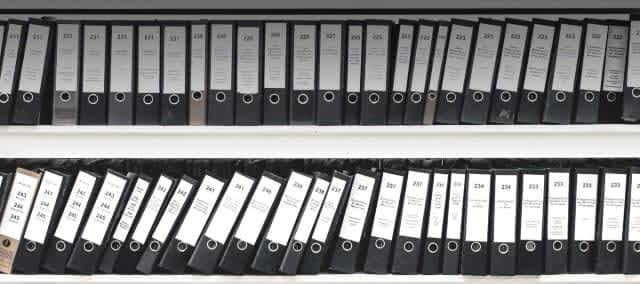GUIDES
How do I access my pension?
When preparing for your retirement, there are several key areas to consider when working out how and when to start accessing your pension. You’ll need to think of the different types of pensions you have (like your state, personal and workplace pensions) and the terms of accessing them, particularly if there are any potential penalties or enhanced benefits.
Then there’s the choice of how to access your pension. You may have a defined benefits pension (a pension scheme with a pre-determined income at retirement) or a personal pension where you can usually choose to take tax-free cash of up to 25% and a popular option is to then take the rest as flexi-access drawdown (unlimited access to your cash whenever you want) or as an annuity (regular guaranteed income payments for the rest of your life).
When can I access my pension?
The age at which you can access your pension will depend on the type of scheme you’re paying into, and it’s also worth considering whether you can access any of this early, and what this will mean for your tax.
Because the age at which you draw your pension can have an effect on its value or how many years it could last, you may change your mind on when to access it and defer for a few more years. There is also usually a difference between when you can access your State Pension (currently age 66), personal pensions (age 55, rising to 57 in 2028) or workplace pensions, so it is worth knowing what these are as soon as you can, so that you can better plan for how to save towards your pension and when you can start pension drawdown.
State pension - a guide to accessing
To be eligible for the full UK Basic State Pension, you’ll need a total of 30 qualifying years of National Insurance contributions or credits, and your State Pension will be paid until you die.
How you can access your State Pension depends upon the age at which you reach the State Pension age. This is currently 66, which is set to gradually increase to 67 for those born on or after April 1960 and then 68 between 2044 and 2046 for those born on or after April 1977. You can’t access it earlier than the State Pension age and the new State Pension will now change how you receive your pension.
The new state pension was introduced in April 2016, and applies to men born on or after 6 April 1951 and women born on or after 6 April 1953. (If you reached State Pension age before 6 April 2016, you’ll get the State Pension under the old rules instead.)
Under the new state pension rules, you won’t receive your pension automatically, so if you reach State Pension age after this date, you’ll need to claim this yourself. You will receive the details at least 2 months before you reach State Pension age, which explains how to do this, and you can claim your pension online or by phone or post.
Withdrawing or cashing in money from private plans
A personal pension can require more planning, with the aim being that your money would last for your lifetime. Our pension calculator can help give a good estimate depending on how much you currently have in your pot, your current contributions and the age at which you plan to retire.
Your planned age of retirement can have a big impact on the value of your pension pot, which might make you reconsider when you access it. The age you can access most workplace or personal pensions is currently 55, and it is set to rise to 57 in 2028. Having the option to choose when you access your pension gives you more freedom to dip into your savings when you need it, and understanding when you can begin to access your pension could give you the opportunity to retire early.
The key things to consider are when you can first access your pension, in what format you can access your pension, and how long it could last you.
Can I cash in my pension?
When you retire, one of the most popular options is to choose to take tax-free cash from your pension pot (usually up to 25%), with the remaining money available either as a flexi-access drawdown or used to purchase a pension product like an annuity.
After you have taken your tax free sum, your remaining pension is likely to be subject to tax, and you’ll then need to decide how you want to access the rest of your money. As there are multiple different ways you can access your pension, understanding what each of these can offer you will help you in making your decision.
The most common options for taking your pension are taking the maximum tax free cash available, buying an annuity or a flexibly- accessed adjustable income, also known as a drawdown.
If you don’t like the options that you have with your pension provider, you can choose to transfer your pension, and by transferring to a different provider you could open yourself up to additional ways of accessing and managing your pension in retirement.
How much can I take from my private pension?
When you start a flexi-access drawdown plan, you can withdraw up to 25% of your savings as a tax free lump sum, from age 55 (rising to 57 in 2028). You can then start drawdown or wait a few more years. Every withdrawal after the tax free lump sum is subject to income tax, but taking too much out at once can result in a huge tax bill, so it’s always best to take advice beforehand.
As an example, if you have £150,000 in your pension pot at the time of retirement, you could withdraw £37,500 as a tax free lump sum from the outset. If you’d like to then draw down £20,000 each tax year, it would be taxed at your marginal rate. So assuming that you have no other taxable income, that would be £7,430 in excess of the 2021/2022 annual income tax allowance, meaning that you’d have to pay tax on that excess, amounting to £1,486 in taxes.
Another option is to not take the 25% lump sum initially, in which case 25% of each withdrawal will be tax free, and the rest taxable at your marginal rate. This option can be useful if you plan to take smaller amounts of money out of your pension over a longer period.
Can I continue to contribute to my pension fund if I cash in part of it?
Yes, you can continue to pay in and benefit from tax relief up to your annual allowance (the lower of £40,000 or your total income if you haven’t flexibly accessed your pension and taken your 25% tax free cash, £4,000 if you have).
If all this information has got you thinking about whether your pension is currently in the right place for you and how you will need it in the future, now may be the time to review your pensions. With the option to combine or transfer old pensions, start a new pension, and contribute to and access flexibly when you come to draw down, signing up to a Profile Pensions account online can help you access your pension the way you want too.


